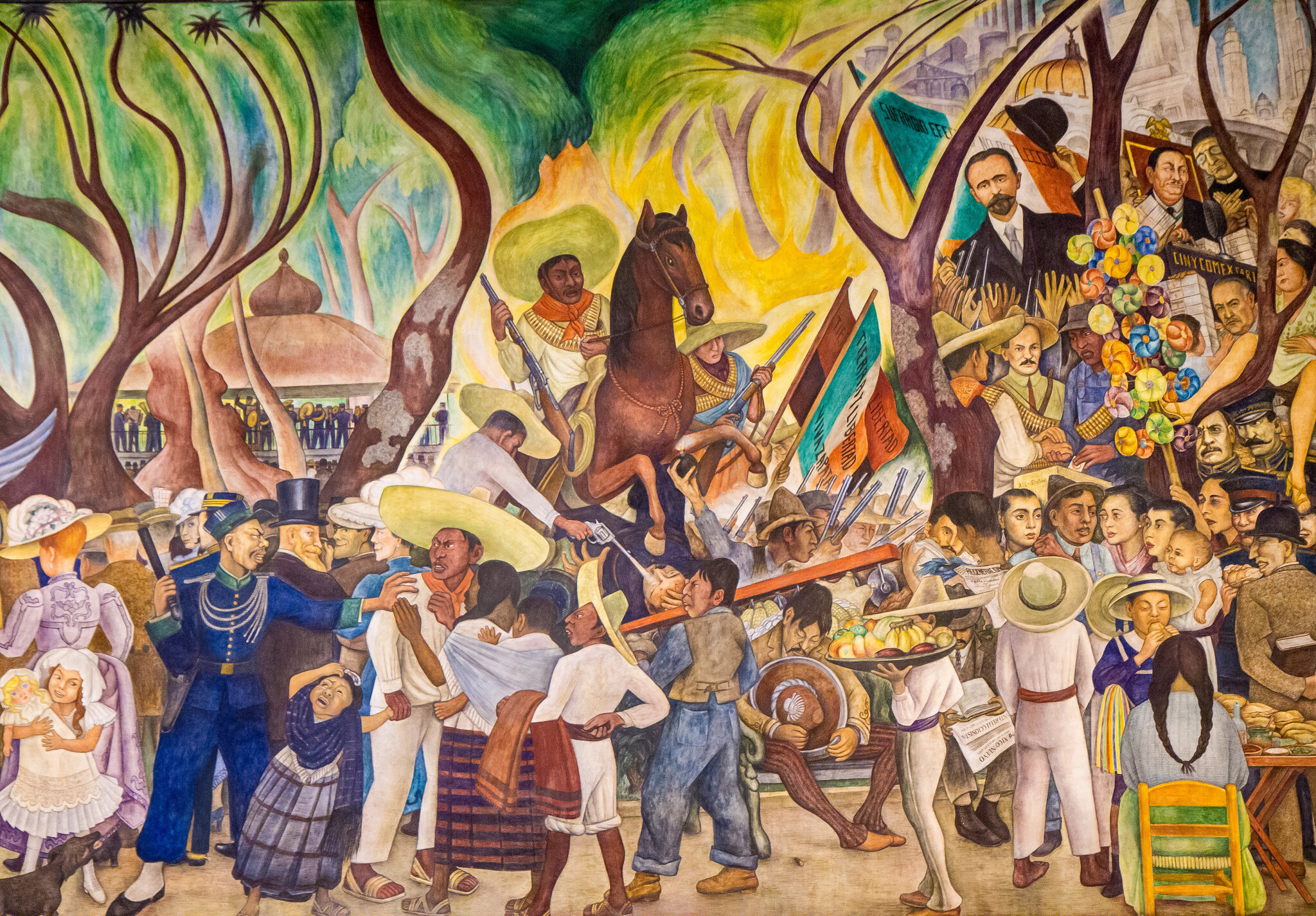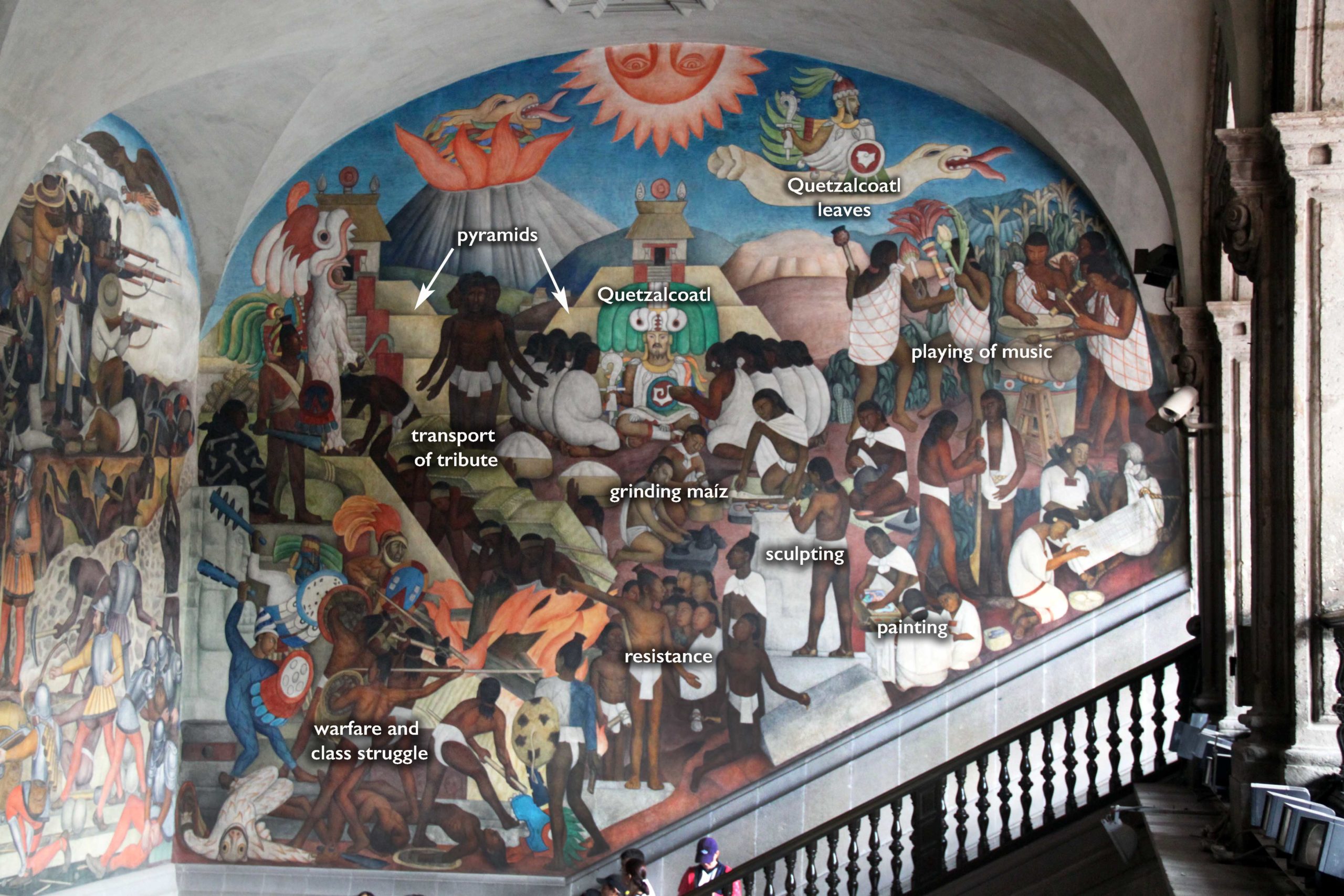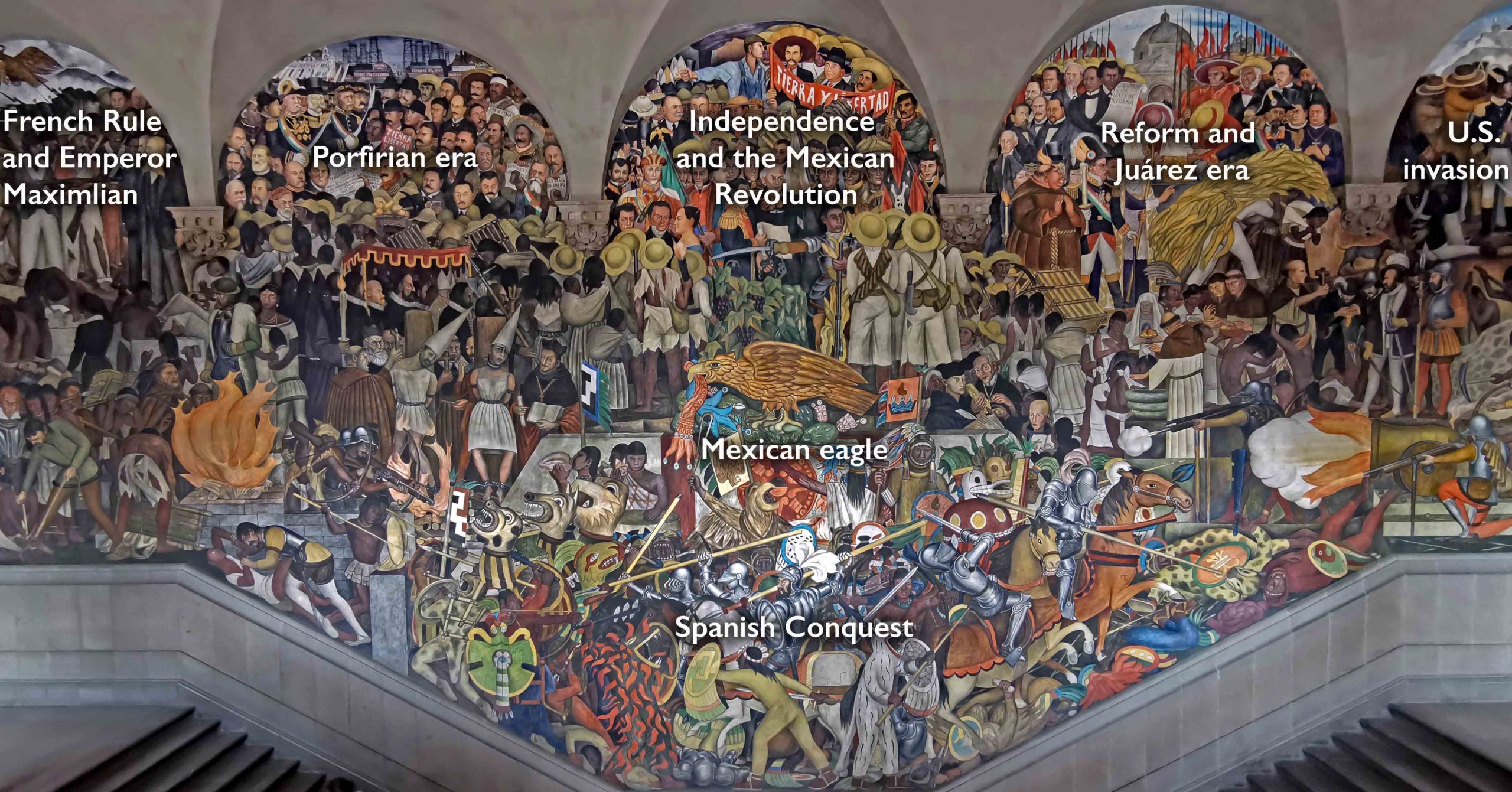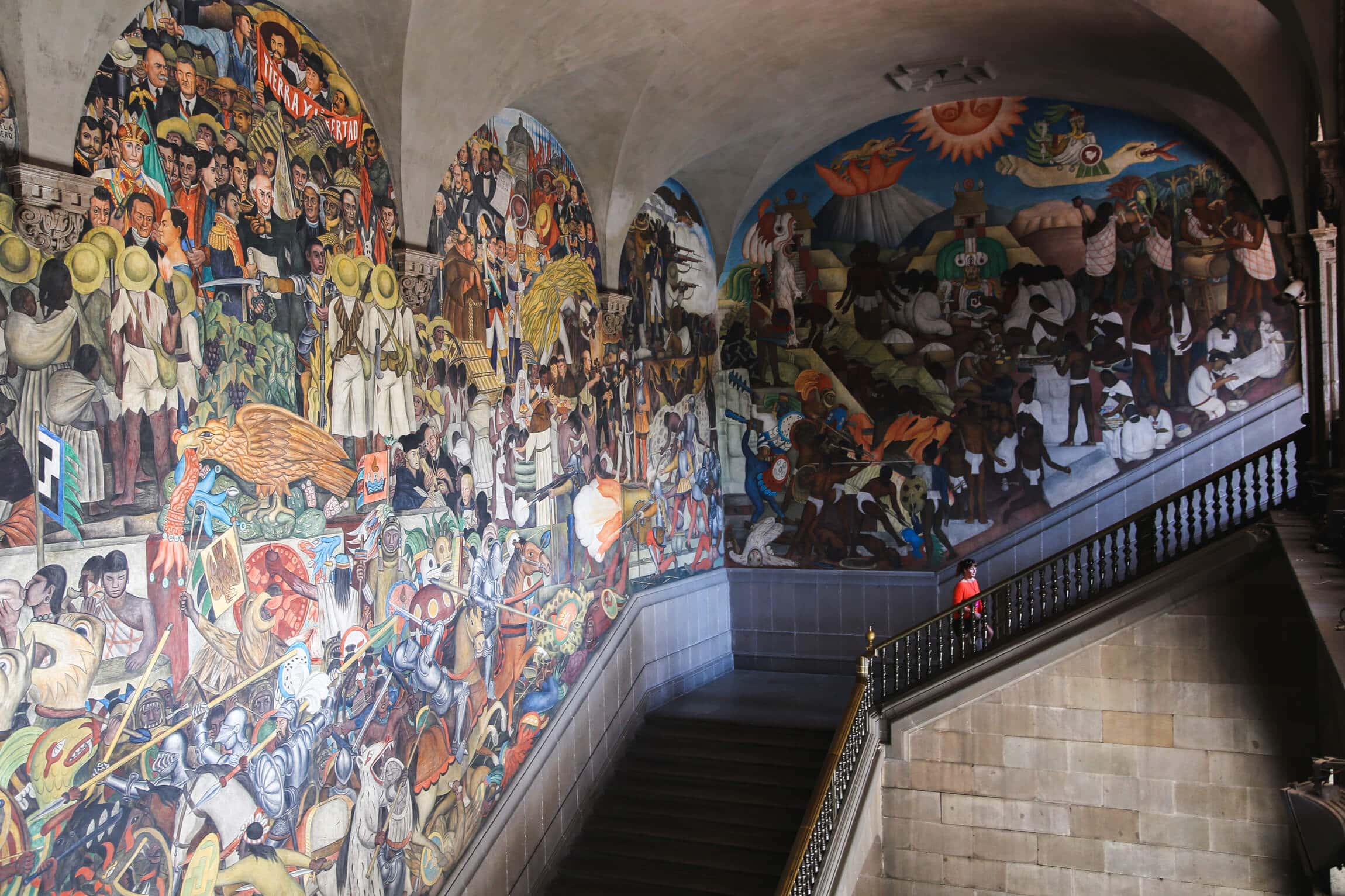Have you ever wondered about the artistic splendor of Mexico? Well, get ready to be amazed as we take you on a journey through Diego Rivera’s iconic murals. These breathtaking works of art are not only visually stunning, but they also tell the rich history and culture of Mexico.
In this article, you’ll learn more about the significance of these murals and the stories they depict. From Rivera’s famous murals at the National Palace to the stunning frescoes at the Palace of Fine Arts, each artwork will transport you to a different era in Mexican history. Whether you’re an art enthusiast or simply looking to immerse yourself in Mexico’s vibrant culture, these murals are a must-see.
So, sit back, relax, and get ready to be captivated by the beauty and grandeur of Mexico’s artistic heritage. With each stroke of paint, Rivera brings to life the stories of ancient civilizations, political struggles, and the everyday lives of the Mexican people. Stay tuned to learn more about these incredible murals and how they continue to inspire and awe visitors from around the world. Unveiling Mexico’s Artistic Splendor: A Journey through Diego Rivera’s Iconic Murals
Mexico is a country known for its vibrant culture, rich history, and diverse artistic heritage. From the ancient ruins of the Mayan civilization to the colorful celebrations of Dia de los Muertos, the art of Mexico has captivated the world for centuries. One of the most prominent figures in Mexican art history is Diego Rivera, a renowned muralist who left an indelible mark on the country’s artistic landscape. Join us as we embark on a journey through the iconic murals of Diego Rivera, unravelling the artistic splendor that awaits in Mexico.
Pre-Columbian art influences
Before we delve into the world of Diego Rivera, it is essential to understand the pre-Columbian art influences that shaped Mexican art. Mexico’s artistic heritage dates back thousands of years, with civilizations like the Olmecs, Maya, and Aztecs leaving behind a remarkable artistic legacy. Their intricate stone carvings, pottery, and vibrant paintings served as significant inspirations for Rivera and other artists who sought to honor Mexico’s indigenous roots through their artwork.
Development of Mexican muralism
Mexican muralism emerged in the early 20th century as a response to the social and political upheaval in the country. It became a powerful tool for artists to express their views on the Mexican Revolution, social inequality, and indigenous rights. The movement aimed to bring art out of elite galleries and immerse it in public spaces, making it accessible to all. Diego Rivera played a pivotal role in the development of Mexican muralism, leaving an indelible mark on the art world with his monumental and thought-provoking murals.
Role of Diego Rivera in the Mexican art scene
Diego Rivera was born in Guanajuato, Mexico in 1886, and his artistic journey began at an early age. Raised in a family of artists, he was exposed to painting and sculpture from a young age, which greatly influenced his artistic style. Rivera studied art in Mexico City and later moved to Europe, where he immersed himself in the works of Renaissance masters and European avant-garde movements. His time abroad shaped his artistic style, but it was his return to Mexico that truly defined his artistic identity.
![]()
Introduction to Diego Rivera’s Murals
Diego Rivera’s murals are undoubtedly his most celebrated works, showcasing his immense talent and penchant for storytelling. His murals can be found in various locations across Mexico, each providing a unique glimpse into Mexican history, culture, and politics.
Early life and artistic influences
Diego Rivera’s early life greatly influenced his artistic journey. Growing up in a family of artists, he was exposed to different art forms, including frescoes, which would later become his preferred medium. His studies in Europe broadened his artistic horizons, allowing him to embrace different techniques and styles, while still maintaining a strong connection to his Mexican roots.
Fascination with Mexican culture and politics
One of the defining aspects of Diego Rivera’s art was his deep fascination with Mexican culture and politics. He believed that art should serve as a vehicle for social change and made it his mission to depict the struggles and triumphs of the Mexican people. Rivera’s murals often celebrated the indigenous heritage of Mexico, highlighting the importance of preserving cultural traditions in a rapidly changing world.
Use of large-scale murals as a medium
Diego Rivera’s decision to focus on large-scale murals was a deliberate one. He believed that art should be accessible to all, and by creating murals in public spaces, he was able to reach a wider audience. The sheer size of his murals allowed him to tell complex stories and convey powerful messages, turning walls into canvases and transforming public spaces into immersive art experiences.
Exploring Rivera’s Major Murals
Diego Rivera’s murals can be found in numerous locations across Mexico, each exploring different themes and narratives. Let’s take a closer look at some of his most significant murals and the stories they tell.
National Palace: Depicting Mexico’s history
One of Rivera’s most famous works is the series of murals at the National Palace in Mexico City. Here, Rivera meticulously depicts the history of Mexico, from its ancient civilizations to the Mexican Revolution. The murals provide a panoramic view of Mexico’s past, showcasing its cultural heritage, struggles, and triumphs. They serve as a visual testament to the resilience and spirit of the Mexican people.
Palacio de Bellas Artes: Celebration of Mexican arts
The Palacio de Bellas Artes is home to another extraordinary mural by Diego Rivera. Known as “Man at the Crossroads,” this mural celebrates Mexican arts and its connections to the global artistic community. It portrays artists, scientists, and thinkers from different parts of the world, emphasizing the importance of cultural exchange and collaboration. Despite controversy and eventual destruction, this mural stands as a testament to Rivera’s vision of art as a unifying force.
Secretariat of Public Education: Educating the masses through art
The Secretariat of Public Education in Mexico City houses a series of murals by Diego Rivera that aim to educate the masses through art. These murals explore various aspects of Mexican life, including agriculture, education, and industry. Rivera believed that art had the power to educate and inspire, and through these murals, he sought to bring knowledge and enlightenment to all, bridging the gap between the elite and the common people.

Analyzing the Themes
Diego Rivera’s murals were not just artistic masterpieces; they were also powerful vehicles for Social and political commentary. Through his artwork, Rivera addressed important social issues and advocated for the rights of marginalized communities.
Social and political commentary
Rivera’s murals were deeply embedded in social and political commentary, exploring themes such as social inequality, workers’ rights, and the struggles of the working class. His murals served as an indictment of the oppressive power structures that plagued society, calling for change and justice. Rivera’s art became a mirror to the society he lived in, exposing its flaws while offering hope for a better future.
Depiction of indigenous culture and traditions
One of the recurring themes in Rivera’s murals is the celebration of Mexico’s indigenous culture and traditions. He believed in the power of preserving and honoring the heritage of Mexico’s indigenous communities, portraying their customs, rituals, and struggles. Through his murals, Rivera aimed to reclaim and amplify the voices of the marginalized, elevating their narratives to the forefront of Mexican art and society.
Representation of Mexican revolution and workers’ rights
Diego Rivera’s murals were deeply influenced by the Mexican Revolution, a period of intense social and political upheaval in the country. His works captured the spirit of the revolution, depicting the struggles and sacrifices of the people who fought for their rights and freedoms. Rivera’s art became a visual testament to the resilience and heroism of the Mexican people, as well as a reminder of the ongoing fight for social justice.
Rivera’s Artistic Techniques
Diego Rivera’s artistic techniques were as revolutionary as his themes. He blended traditional art forms with innovative approaches, creating murals that were both visually stunning and conceptually profound.
Mural painting process
The process of creating a mural is a labor-intensive one, requiring meticulous planning and careful execution. Rivera’s mural painting process involved extensive research, sketching, and the use of intricate stencils. He would then transfer his sketches onto the wall and begin the arduous task of bringing his vision to life. Rivera considered every aspect of the mural, from the placement of figures to the use of colors, ensuring that each detail contributed to the overall narrative.
Incorporation of fresco technique
Rivera’s preferred technique for mural painting was fresco, a traditional method that involves applying pigments onto wet plaster. This technique allowed Rivera to achieve vibrant colors and a sense of depth in his murals. He would work quickly, knowing that once the plaster dried, there was no going back. The fresco technique gave Rivera’s murals a unique texture and luminosity, enhancing the visual impact of his art.
Use of vibrant colors and symbolism
Color played a significant role in Diego Rivera’s murals, enhancing their emotional impact and communicating complex ideas. Rivera was known for his bold use of vibrant colors, from deep blues and fiery reds to lush greens and golden yellows. Each color had symbolic meaning, representing different emotions, themes, or cultural references. Rivera used color as a visual language, creating a dialogue between the viewer and the mural.

Legacy and Impact
Diego Rivera’s legacy extends beyond his iconic murals, leaving an indelible mark on the art world and inspiring generations of Mexican artists.
Influence on future generations of Mexican artists
Diego Rivera’s revolutionary approach to art had a profound impact on future generations of Mexican artists. His dedication to social justice, his celebration of indigenous culture, and his commitment to making art accessible to all served as a blueprint for emerging artists. Today, Mexican art continues to flourish, with artists drawing inspiration from Rivera’s themes, techniques, and ideals.
International recognition and exhibition
Diego Rivera’s murals gained international recognition, solidifying his status as one of the most influential artists of the 20th century. His art was exhibited in renowned galleries and museums worldwide, captivating audiences with its beauty and political resonance. Rivera’s work resonated with people from different cultures and backgrounds, evoking a universal appreciation for art as a tool for social change.
Preservation and restoration efforts
Preserving Rivera’s murals for future generations is a challenge that requires constant care and attention. The passage of time, exposure to the elements, and even political controversies have posed threats to the integrity of these artistic gems. To ensure their longevity, conservation and restoration efforts have been undertaken to safeguard Rivera’s murals and maintain their cultural and historical significance.
Controversies surrounding Rivera’s Murals
Diego Rivera’s murals were not without their share of controversies. Their powerful political messages and depictions of controversial figures stirred debates and even faced censorship.
Criticism of political ideologies portrayed
Rivera’s murals were inherently political, unapologetically presenting his Marxist viewpoints and praising communist leaders. This stirred criticism from conservative factions and those who disagreed with his politics. Rivera’s art became both a catalyst for political dialogue and a target for opposition, highlighting the power of art to ignite controversy and challenge established norms.
Public acceptance and censorship challenges
The sheer scale and boldness of Diego Rivera’s murals sometimes posed challenges to public acceptance. His artwork took on topics that were deemed controversial, such as workers’ rights, indigenous struggles, and political revolution. Some of his murals faced censorship or modifications, reflecting the delicate balance between artistic expression and societal acceptance.
Debate over ownership and preservation
Diego Rivera’s murals are cherished national treasures in Mexico, sparking debates over ownership and preservation. As these murals are public artworks, questions arise regarding who holds the responsibility for their protection and upkeep. Finding a balance between public access, conservation, and respecting the artist’s intent is an ongoing challenge that requires careful consideration and collaborative efforts.

Touring Rivera’s Murals in Mexico City
For art enthusiasts, visiting Diego Rivera’s murals is an enriching and immersive experience that allows you to witness firsthand the magnitude of his artistic genius. In Mexico City alone, there are several locations where you can explore and appreciate his iconic murals.
Visiting the National Palace
Start your journey at the National Palace, where Rivera’s murals depict the tumultuous history of Mexico. As you walk through the halls, you’ll be transported through time, witnessing the rise and fall of ancient civilizations, the struggles of the Mexican people, and the forging of a nation.
Exploring the Palacio de Bellas Artes
No visit to Mexico City is complete without a visit to the Palacio de Bellas Artes, home to Rivera’s mural “Man at the Crossroads.” Immerse yourself in a visual feast as you gaze upon the thought-provoking imagery that celebrates the connections between Mexican arts and the global artistic community.
Guided tours and audio guides
To fully appreciate the intricate details and narratives behind Rivera’s murals, consider taking guided tours or utilizing audio guides. These resources provide valuable insights into the artistic techniques, historical context, and symbolism embedded in each mural, enriching your understanding and appreciation of Rivera’s brilliance.
Beyond Mexico City: Rivera’s Murals in Other Locations
While Mexico City is the epicenter of Rivera’s murals, his iconic artwork can also be found in other locations across Mexico, telling their own unique stories.
San Francisco: The Pan American Unity Mural
In San Francisco, you’ll find Rivera’s “Pan American Unity” mural, commissioned for the Golden Gate International Exposition in 1940. This masterpiece celebrates the unity and diversity of the Americas, depicting characters from different cultures and ethnicities coming together in harmony.
Detroit: The Detroit Industry Murals
The Detroit Institute of Arts houses Rivera’s “Detroit Industry” murals, a tribute to the city’s industrial heritage. These murals showcase the interconnectedness of industry and humanity, emphasizing the importance of labor and collaboration in building a thriving society.
Chapingo: The Chapel of Chapingo Murals
Located in the Chapingo Autonomous University, the Chapel of Chapingo is adorned with Rivera’s murals that depict the struggles of the Mexican people and their connection to the land. These murals celebrate the indigenous heritage of Mexico, fostering a sense of pride and recognition for the contributions of the people who worked the land.

Rivera’s Influence on Contemporary Art
Diego Rivera’s legacy extends far beyond the confines of his lifetime, influencing countless artists in Mexico and around the world.
Inspirations for modern-day Mexican artists
Rivera’s commitment to social justice and his celebration of Mexican culture continue to inspire contemporary Mexican artists. They draw parallels between their own struggles and those depicted in Rivera’s murals, using art as a means of expression and a call to action.
Impact on the global muralism movement
Diego Rivera’s murals were instrumental in shaping the global muralism movement, inspiring artists around the world to use public spaces as their canvas. The spirit of Mexican muralism lives on, as artists from different countries draw inspiration from Rivera’s boldness and audacity in seizing public spaces to convey powerful messages.
Integration of social and political themes in art
One of the most significant contributions of Rivera’s art was his integration of social and political themes into his work. His murals became a platform for discourse, challenging societal norms, and raising awareness about inequality and injustice. Today, artists continue to follow in his footsteps, using their art to shed light on pressing social issues and advocate for change.
Art Tourism in Mexico
Mexican art has become a significant draw for tourists, with art enthusiasts and culture seekers flocking to Mexico to immerse themselves in its rich artistic heritage.
Promotion of muralism tours
Art tours focused on Mexican muralism have become increasingly popular, allowing visitors to explore the vibrant murals that adorn Mexico’s cities. These tours provide valuable insights into the history, techniques, and significance of muralism, offering a unique and immersive way to experience Mexican art.
Other significant art destinations in Mexico
Beyond Diego Rivera’s murals, Mexico boasts numerous other significant art destinations. From the Frida Kahlo Museum in Mexico City to the folk art galleries in Oaxaca, there is an abundance of artistic treasures waiting to be discovered. Each city and region offers its own distinct artistic flair and traditions, making Mexico a haven for art lovers.
Art festivals and events celebrating Mexican art
Throughout the year, Mexico hosts various art festivals and events that celebrate its rich artistic heritage. From the Cervantino International Festival in Guanajuato to the Day of the Dead festivities in Oaxaca, these cultural events showcase the diversity and creativity of Mexican art. Attending these festivals allows you to immerse yourself in the vibrant traditions and vibrant art scene of Mexico.
Conclusion
Unveiling Mexico’s Artistic Splendor: A Journey through Diego Rivera’s Iconic Murals is an invitation to explore the breathtaking beauty and powerful narratives of Rivera’s murals. As you embark on this visual journey, you’ll gain a deeper appreciation for Mexico’s rich artistic heritage, its vibrant culture, and the indomitable spirit of its people. Let Rivera’s murals ignite your curiosity and inspire you to delve into the fascinating world of Mexican art, where history, politics, and artistic expression intertwine harmoniously.